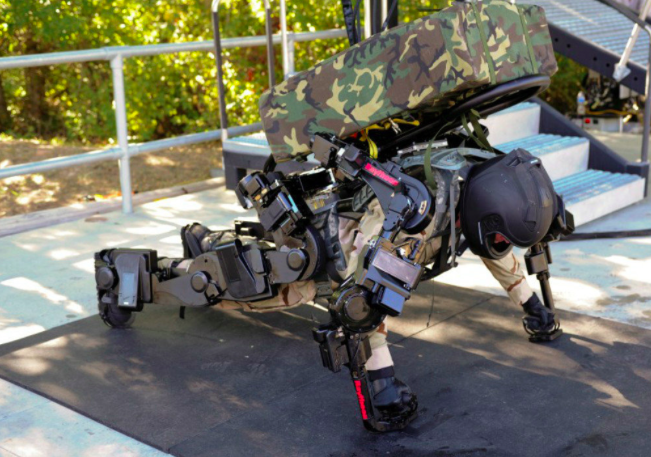It may not be sharks with frickin’ laser beams attached to their heads, but for a leader bent on expanding his global sphere of influence, an army of soldiers equipped with mind-controlled robotic exoskeletons may be the next best thing. According to Russian media, that’s just what President Vladimir Putin’s army has in the pipeline.
On Wednesday, the headline on the government-run Sputnik News website was, “Lock and Load: Russian Hybrid Robo-Soldiers Could Be Just Five Years Away.” Russia Today, the equally servile outlet aimed at English speakers led with “Iron Man mass production? Russian army may get combat exoskeletons by 2020.” Even the more independent Moscow Times trumpeted, Russian Army May Have Superhuman Mind-Controlled Exoskeletons in 5 Years.
Related: 7 New Weapons in Vladimir Putin's Arsenal
None of this, of course, means that a Russian army of Terminator-like super-soldiers is around the corner. But that wasn’t stopping speculation.

“The Russian Army is set to receive mind-controlled exoskeletons,” Sputnik reported. “The wearable robots will be controlled by brain waves and will increase the strength and endurance of the serviceman wearing it by several times.”
Russian soldiers equipped with the new gear, according to Sputnik, would be able to carry more than 600 pounds of gear. Their endurance, it added, would also be greatly increased.
And the mind-control part? Sputnik quoted Aleksander Kulish, identified as the head of medical equipment development and manufacturing at Russia’s United Instrument Manufacturing Corporation, as saying, “I think that in about five years we will introduce a neuroelectronic interface which will control the exoskeletons and artificial limbs through the electrical potential of a human brain.”
Related: Defiant Putin Calls Invasion of Crimea ‘Historic Justice’
To the Moscow Times, Kulish said, “With this a soldier can perform incredible jumps, move and throw heavy objects. This is the future.”
Anybody who has a passing familiarity with video games will recognize the utility of being able to pick up and toss a 55-gallon drum of something explosive at your enemy once your multiple machine guns are out of ammunition. But how useful a battery-powered set of extra limbs would be in actual real-world combat situations is, to put it lightly, unclear.

The development of mechanical exoskeletons has been something militaries around the world, including in the United States, have been toying with since the 1960s, and the U.S. media has been equally credulous with regard to stories about technologies that would turn human soldiers into something like superheroes.
While the future of warfare might well involve something like the “mobile infantry” in Robert Heinlein’s Starship Troopers, the most likely use for robotic exoskeletons in the near term seem to be medical and industrial.
Top Reads from The Fiscal Times:




